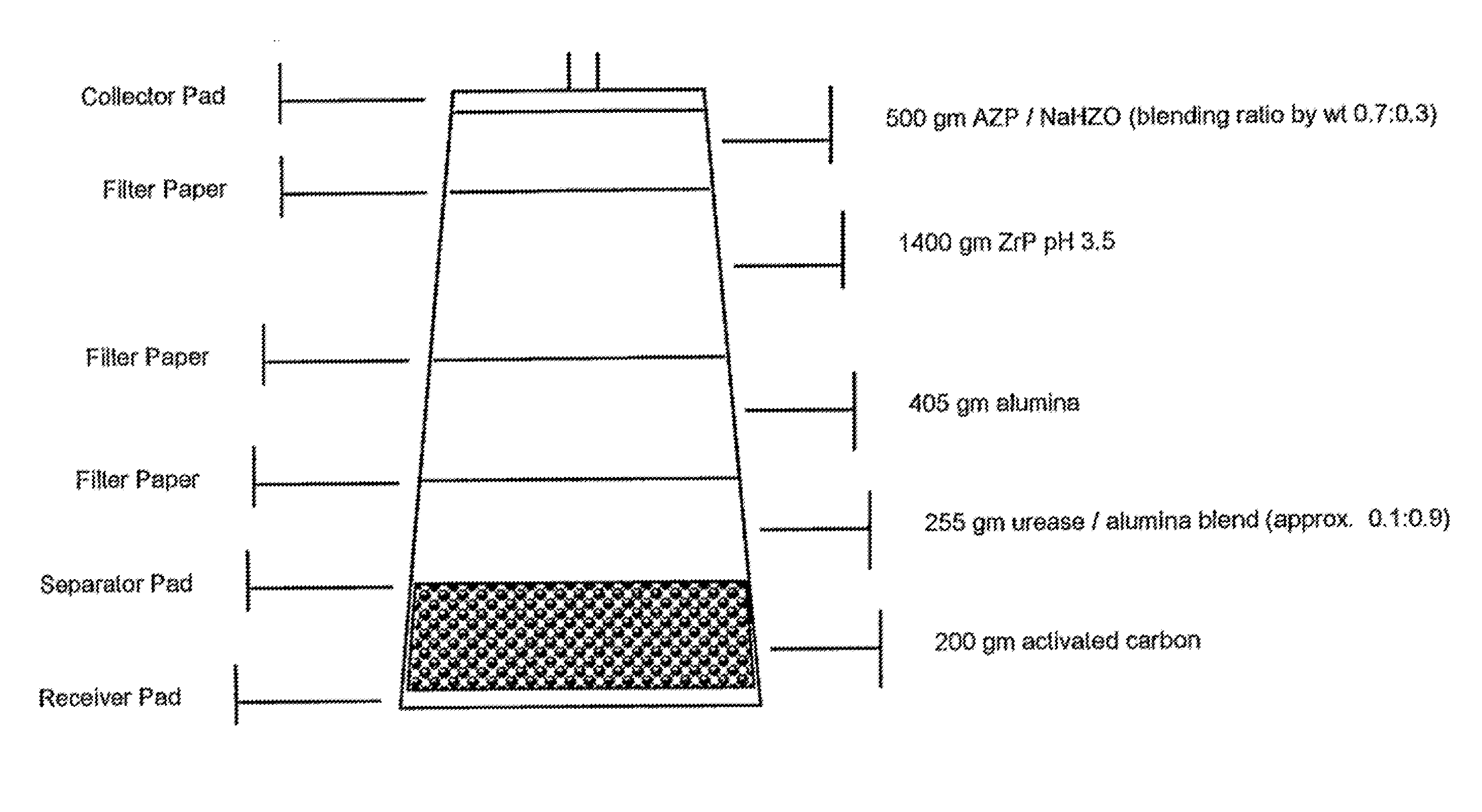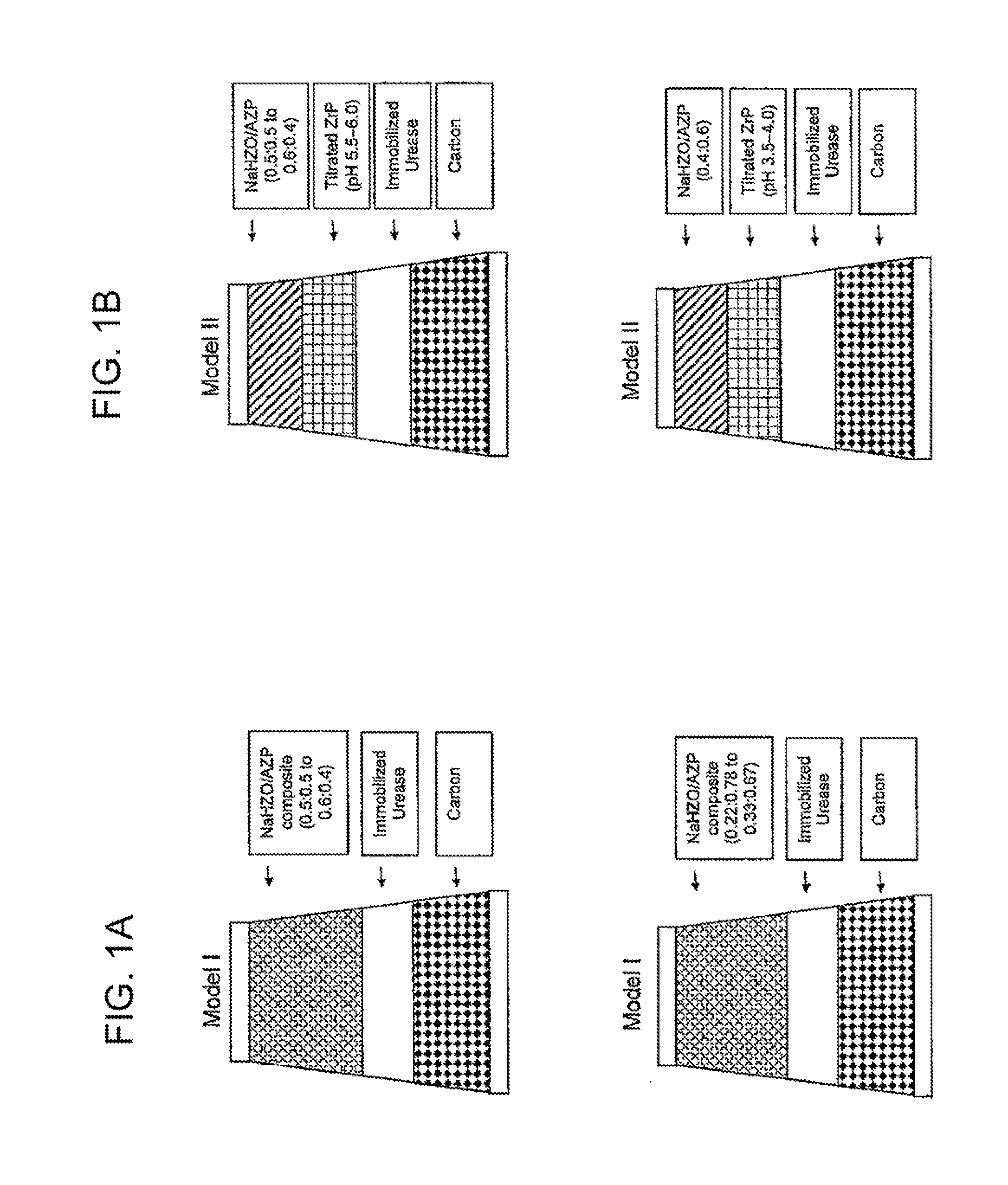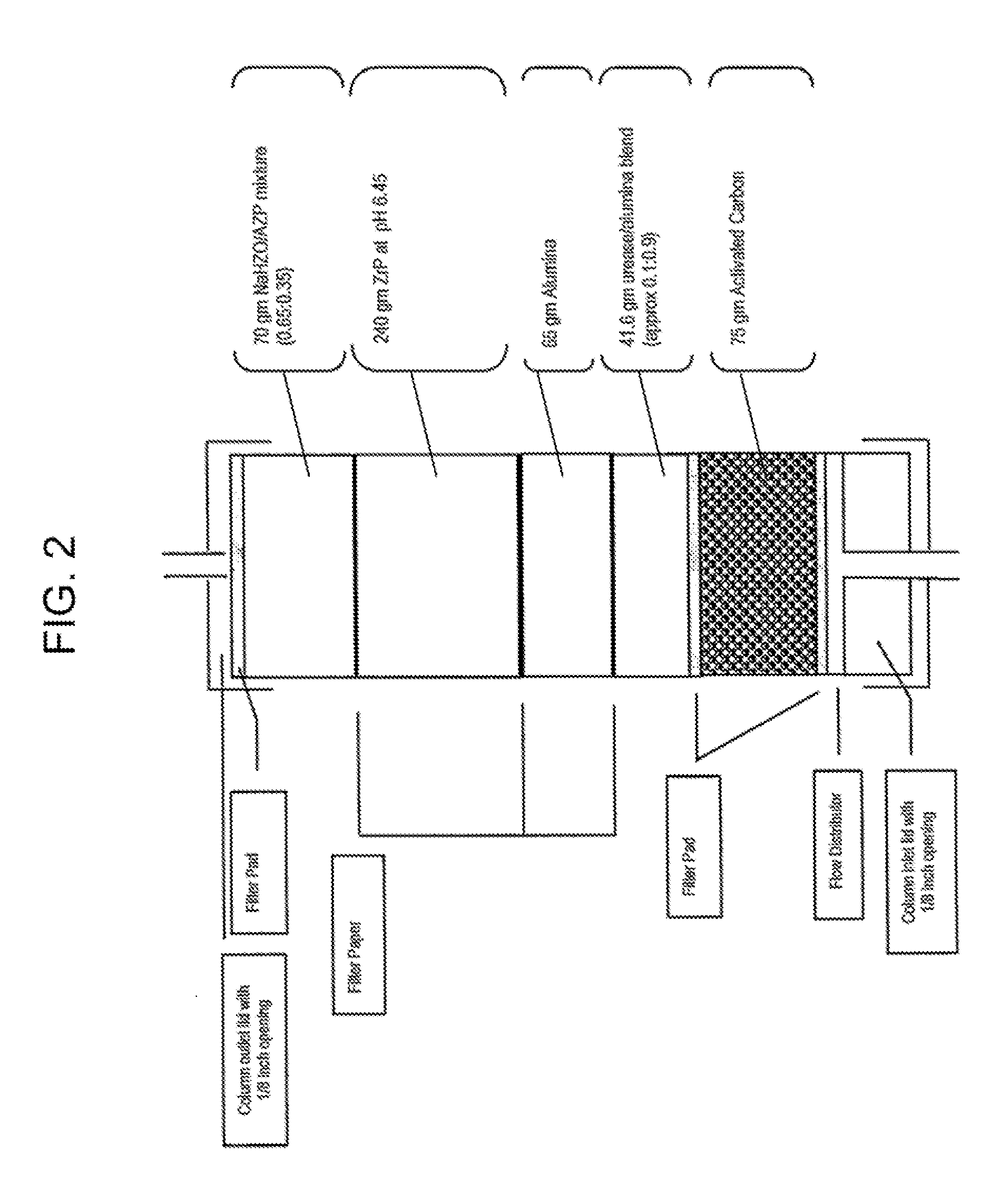Acid Zirconium Phosphate and Alkaline Hydrous Zirconium Oxide Materials For Sorbent Dialysis
a zirconium oxide and acid zirconium phosphate technology, applied in the field of ion exchange materials, can solve problems such as common side effects
- Summary
- Abstract
- Description
- Claims
- Application Information
AI Technical Summary
Benefits of technology
Problems solved by technology
Method used
Image
Examples
example 1
[0074]One (1) kg of BZS was added to deionized water in a reactor to form a slurry with moderate agitation speed. Then, about 770 ml Technical Grade phosphoric acid (76%) diluted with equal volume of water was pumped into the slurry. With slow agitation, the slurry was heated at moderate or maximum rate to 180-185° F., and then heated to maintain that temperature for one hour after the temperature was reached. The slurry was then cooled to room temperature. The product was filtered and washed in a Buchnell funnel with deionized water. The filter cake was then dried in a tray dryer at 180° F. until the moisture level was 12-18 weight percent LOD. The particle size was in a range of from 25-60 microns.
example 2
[0075]Solution A was prepared as follows: 20 g ZOC crystals was dissolved in 15 ml deionized water and 15 ml isopropanol was added to the solution. Then, with agitation by magnetic stirrer or plastic impeller, about 100 drops of concentrated HCl was added to the solution with continued agitation until all precipitate was redissolved to form a clear solution.
[0076]Solution B was prepared as follows: 30 g Technical Grade phosphoric acid (76%) was diluted in 60 ml water in a 500 ml beaker. With a magnetic stirrer, the diluted acid was heated to a boiling temperature.
[0077]Reaction process steps:[0078]Step 1: Solution A was pumped into Solution B at boiling temperature at about 10 ml / min flow rate, with moderate agitation speed using magnetic stirrer or plastic impeller.[0079]Step 2: After addition was complete to produce a slurry of precipitate, the slurry was heated for one hour to evaporate off the alcohol completely and improve crystal structure of the AZP precipitate.[0080]Step 3: ...
example 3
[0082]500 g BZS was added to 430 ml deionized water in a 1-liter beaker to form a slurry with mild agitation. Then 40 ml 50% NaOH was added to the slurry to elevate the pH to about 6.5. The material was filtered and washed 3 times with 500 ml deionized water in a Buchnell funnel. With mild agitation, the filter cake was transferred to an alkali solution with higher alkaline strength made up by mixing 140 ml 50% NaOH with 125 ml deionized water. The pH of the slurry was checked and an additional amount of NaOH was added if necessary to obtain pH above 12.5. The slurry was then agitated for 30 minutes. The product was filtered in a Buchnell funnel fitted with glass fiber filter then washed with deionized water until the leachable sulfate could not be detected in the filtrate by applying the BaCl2 reagent test. The filter cake was transferred to a tray dryer at approximately 110° F. and the material dried to a moisture level of about 25 to 30 weight percent LOD to form a free-flowing p...
PUM
| Property | Measurement | Unit |
|---|---|---|
| grain size | aaaaa | aaaaa |
| pH | aaaaa | aaaaa |
| size | aaaaa | aaaaa |
Abstract
Description
Claims
Application Information
 Login to View More
Login to View More - R&D
- Intellectual Property
- Life Sciences
- Materials
- Tech Scout
- Unparalleled Data Quality
- Higher Quality Content
- 60% Fewer Hallucinations
Browse by: Latest US Patents, China's latest patents, Technical Efficacy Thesaurus, Application Domain, Technology Topic, Popular Technical Reports.
© 2025 PatSnap. All rights reserved.Legal|Privacy policy|Modern Slavery Act Transparency Statement|Sitemap|About US| Contact US: help@patsnap.com



